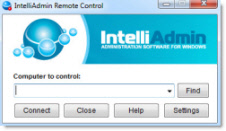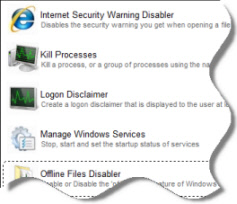variable filename
Once the "Varible mapping variable = Filename1 Index = 0" step is done, the file name has been
captured. This simple. No other code is required.
You can then inspect and/or use the the variable content in your package.
Please tell me SSIS rocks!Arthur My Blog
March 23rd, 2012 10:40pm
I have a file that was ftp'd and want to use the file name variable to populate a column in a table with the filename that is used as a history table. How do I use the variable that has the file name in it.
Free Windows Admin Tool Kit Click here and download it now
March 25th, 2012 11:07am
Hello
donnalc123,
You can use a ForEach Loop (even though you get only one file), the luxury of using it is in the automated mapping of the file name (however you like it, e.g. full path, or only the name) being picked (based on a mask) to a package variavble with index 0.
Then you can use the variable in any component down the execution pipe.
Example: http://www.sqlservercentral.com/articles/Integration+Services+%28SSIS%29/67871/Arthur My Blog
March 25th, 2012 11:14am
Hi, you can use Derived Column transformation in you Data Flow task to add a new column with the variable value.
http://www.bimonkey.com/2009/08/the-derived-column-transformation/
David.
Free Windows Admin Tool Kit Click here and download it now
March 25th, 2012 11:14am
Hi Donnalc,
The best option you have is FOR EACH LOOP CONTAINER,
http://www.sqllion.com/2009/06/programming-foreach-loop-container-%E2%80%93-enumerating-excel-files/
=================================== Rahul Vairagi ========================================== My Blogs: www.sqlserver2005forum.blogspot.com
March 25th, 2012 12:03pm
I really don't want to add a new column to the history table. I just want to put the file name into an existing column
Free Windows Admin Tool Kit Click here and download it now
March 25th, 2012 2:20pm
Both solutions do not talk about adding new columns, you simply add a new data column to the data flow, internally (in the package), this remains transparent to the table or your end result.
Please take one avenue or another and they will lead you to the same destination.Arthur My Blog
March 25th, 2012 2:25pm
I'm rather new to SSIS packages so bear with me.
I created a variable in the package
Using a Foreach Loop Container
Collection= ForEach File Enumerator
Varible mapping variable = Filename1 Index = 0
Using Script task editor to get the file name used the readwrite variable = User::FileName1
Public Sub Main()
Dts.Variables("FileName1").Value
= System.IO.Path.GetFileName(Dts.Variables("FileName1").Value.ToString())
Dts.TaskResult = Dts.TaskResult.ToString
Do I need more code than this?
Now how do I use this filename1 variable to populate the Source_Filename column in another table
Free Windows Admin Tool Kit Click here and download it now
March 25th, 2012 3:55pm
Once the "Varible mapping variable = Filename1 Index = 0" step is done, the file name has been
captured. This simple. No other code is required.
You can then inspect and/or use the the variable content in your package.
Please tell me SSIS rocks!Arthur My Blog
March 25th, 2012 4:01pm
Hello donnalc123,
Once the file name is captured into a variable the most typical option to providing this variable to any downstream components would be via the
Derived Column Transformation (DCT):
Drag and drop a new DCT to the canvas andSet it to drive a new column (the <add as new column> needs to be chosen in Derived Column setting) from the file name variable;Use the newly created column (of say DT_WSTR type) in for example an OLEDB destination (or Execute SQL Task with a parameter) to map to the Source_filename column of the History table. Using SQL is also possible, it depends if you just update this single
field, or you are inserting the data along with other.Arthur My Blog
Free Windows Admin Tool Kit Click here and download it now
March 26th, 2012 9:03pm
Hello donnalc123,
Once the file name is captured into a variable the most typical option to providing this variable to any downstream components would be via the
Derived Column Transformation (DCT):
Drag and drop a new DCT to the canvas andSet it to drive a new column (the <add as new column> needs to be chosen in Derived Column setting) from the file name variable;Use the newly created column (of say DT_WSTR type) in for example an OLEDB destination (or Execute SQL Task with a parameter) to map to the Source_filename column of the History table. Using SQL is also possible, it depends if you just update this single
field, or you are inserting the data along with other.Arthur My Blog
March 26th, 2012 9:03pm
This is being done in a foreach loop using Foreach Fie Enumerator
Collecitons:
Retireve file name --Fully qualified
Variable Mappings
Variable = User::vFilename2 Index = 0
************************************
Then I populated the variable vfilename2 before the sql task using the script task to get the filename using a read write variable.
This worked ok.
I tried to use the sql task but still does not work. I don't know if I am setting the options on the edit screen correctly
Resultset -- None
sqlStatement
Connection type -- OLE DB
Connection -- ptimedb
SQL Source Type -- Direct Input
SQL Statement --- Insert into dbo.Source_File_Processing_History (Source_Filename)values (? )
IsQuery StoredProcedure --false
BypassPrepare -- false
In Parameter Mapping
Variable = user:vfilename2
Direction = Input
Data Type = VARCHAR
ParameterName = 0
Parameter Size = 100
What am I doing wrong or am I missing something?
Free Windows Admin Tool Kit Click here and download it now
March 31st, 2012 9:38am
This is being done in a foreach loop using Foreach Fie Enumerator
Collecitons:
Retireve file name --Fully qualified
Variable Mappings
Variable = User::vFilename2 Index = 0
************************************
Then I populated the variable vfilename2 before the sql task using the script task to get the filename using a read write variable.
This worked ok.
I tried to use the sql task but still does not work. I don't know if I am setting the options on the edit screen correctly
Resultset -- None
sqlStatement
Connection type -- OLE DB
Connection -- ptimedb
SQL Source Type -- Direct Input
SQL Statement --- Insert into dbo.Source_File_Processing_History (Source_Filename)values (? )
IsQuery StoredProcedure --false
BypassPrepare -- false
In Parameter Mapping
Variable = user:vfilename2
Direction = Input
Data Type = VARCHAR
ParameterName = 0
Parameter Size = 100
What am I doing wrong or am I missing something?
March 31st, 2012 9:38am
It still doesn't work perhaps because the table has 2 primary keys file id which is automatically populated and Source_filename which is what I am trying to insert into the table in a new row. I also need to get the date from the package variable
(filename1). When I tried to use the filename variable I get the above error.
What I have tried so far in the Execute SQL task editor
connection type is OLE DB
SQLSource type = Direct input
in the Parameter mapping used the filename1 variable with parameter name = 0 direction = input
in the ResultSet = none
my sql statements used that haven't worked
Insert into dbo.Source_File_Processing_History (Source_Filename)values (?)
Insert into dbo.Source_File_Processing_History (Source_Filename)values (dts.variables('filename1').value )
Free Windows Admin Tool Kit Click here and download it now
March 31st, 2012 10:08am
It still doesn't work perhaps because the table has 2 primary keys file id which is automatically populated and Source_filename which is what I am trying to insert into the table in a new row. I also need to get the date from the package variable
(filename1). When I tried to use the filename variable I get the above error.
What I have tried so far in the Execute SQL task editor
connection type is OLE DB
SQLSource type = Direct input
in the Parameter mapping used the filename1 variable with parameter name = 0 direction = input
in the ResultSet = none
my sql statements used that haven't worked
Insert into dbo.Source_File_Processing_History (Source_Filename)values (?)
Insert into dbo.Source_File_Processing_History (Source_Filename)values (dts.variables('filename1').value )
March 31st, 2012 10:08am
For the primary key violations you supposed to get an error. Or I am suspecting you may have a table
trigger that rolls back some inserts (e.g. on before insert that check the violation constraints, and silently rolls the transaction back). Is that possible? One thing though why the same SQL works in SSMS?
PS: Insert into dbo.Source_File_Processing_History (Source_Filename)values (dts.variables('Insert into dbo.Source_File_Processing_History (Source_Filename)values (dts.variables('filename1').value )').value
) is not a valid command.
Try to set your command from the variable source instead. Use a new variable in which you express (using SSIS Expression):
"INSERT INTO dbo.Source_File_Processing_History (Source_Filename) VALUES ('"
+ @[User::FileName1] + "')"Arthur My Blog
Free Windows Admin Tool Kit Click here and download it now
March 31st, 2012 10:39am
For the primary key violations you supposed to get an error. Or I am suspecting you may have a table
trigger that rolls back some inserts (e.g. on before insert that check the violation constraints, and silently rolls the transaction back). Is that possible? One thing though why the same SQL works in SSMS?
PS: Insert into dbo.Source_File_Processing_History (Source_Filename)values (dts.variables('Insert into dbo.Source_File_Processing_History (Source_Filename)values (dts.variables('filename1').value )').value
) is not a valid command.
Try to set your command from the variable source instead. Use a new variable in which you express (using SSIS Expression):
"INSERT INTO dbo.Source_File_Processing_History (Source_Filename) VALUES ('"
+ @[User::FileName1] + "')"Arthur My Blog
March 31st, 2012 10:39am
I'm still not sure how to move the variable - filename into the history table column Source_filename using the sqltask.
Free Windows Admin Tool Kit Click here and download it now
March 31st, 2012 10:54am
I'm still not sure how to move the variable - filename into the history table column Source_filename using the sqltask.
March 31st, 2012 10:54am
When you say "does not work" does it mean it generates an error? Or the INSERT does not occur?Arthur My Blog
Free Windows Admin Tool Kit Click here and download it now
March 31st, 2012 11:03am
When you say "does not work" does it mean it generates an error? Or the INSERT does not occur?Arthur My Blog
March 31st, 2012 11:03am
I have just found you a very good blog post containing a very nice and easy method of adding the file name to a table.
Please visit:
FileNameColumnName property, Flat File Source Adapter : SSIS Nugget
Arthur My Blog
Free Windows Admin Tool Kit Click here and download it now
March 31st, 2012 11:07am
I have just found you a very good blog post containing a very nice and easy method of adding the file name to a table.
Please visit:
FileNameColumnName property, Flat File Source Adapter : SSIS Nugget
Arthur My Blog
March 31st, 2012 11:07am
I get an error [Execute SQL Task] Error: Executing the query "Insert into dbo.Source_File_Processing_History
(S..." failed with the following error: "The statement has been terminated.". Possible failure reasons: Problems with the query, "ResultSet" property not set correctly, parameters not set correctly, or connection not established correctly.
Free Windows Admin Tool Kit Click here and download it now
March 31st, 2012 11:28am
I get an error [Execute SQL Task] Error: Executing the query "Insert into dbo.Source_File_Processing_History
(S..." failed with the following error: "The statement has been terminated.". Possible failure reasons: Problems with the query, "ResultSet" property not set correctly, parameters not set correctly, or connection not established correctly.
March 31st, 2012 11:28am
Then the file name is the issue perhaps, thing is it needs to be quoted e.g.
Insert into dbo.Source_File_Processing_History (Source_Filename)values ('test.dat' )
Is your user:vfilename2 has it in this format?Arthur My Blog
Free Windows Admin Tool Kit Click here and download it now
March 31st, 2012 11:35am
Then the file name is the issue perhaps, thing is it needs to be quoted e.g.
Insert into dbo.Source_File_Processing_History (Source_Filename)values ('test.dat' )
Is your user:vfilename2 has it in this format?Arthur My Blog
March 31st, 2012 11:35am
I donn't want to add the filename as a column to my data file. I want to take and use the variable filename to populate a column in another table
Free Windows Admin Tool Kit Click here and download it now
March 31st, 2012 11:36am
I donn't want to add the filename as a column to my data file. I want to take and use the variable filename to populate a column in another table
March 31st, 2012 11:36am
I donn't want to add the filename as a column to my data file. I want to take and use the variable filename to populate a column in another table
It is not a column in THE FILE, it is a new column added to the data pipe.
How are you planning to populate the column in the table with the file name? Is it a SQL UPDATE statement? Or it needs to come in with in a single INSERT when you dump the data into the very target?Arthur My Blog
Free Windows Admin Tool Kit Click here and download it now
March 31st, 2012 11:42am
I donn't want to add the filename as a column to my data file. I want to take and use the variable filename to populate a column in another table
It is not a column in THE FILE, it is a new column added to the data pipe.
How are you planning to populate the column in the table with the file name? Is it a SQL UPDATE statement? Or it needs to come in with in a single INSERT when you dump the data into the very target?Arthur My Blog
March 31st, 2012 11:42am
I was planning to use the Execute SQL task, but I'm not sure how to use the variable to do this
Free Windows Admin Tool Kit Click here and download it now
March 31st, 2012 12:43pm
I was planning to use the Execute SQL task, but I'm not sure how to use the variable to do this
March 31st, 2012 12:43pm
The table I am trying to insert into has a keyidentity column. Do I need to account for that in the insert command as it is a primary key along with the source_Filename column
Free Windows Admin Tool Kit Click here and download it now
March 31st, 2012 1:17pm
The table I am trying to insert into has a keyidentity column. Do I need to account for that in the insert command as it is a primary key along with the source_Filename column
March 31st, 2012 1:17pm
Sure, it is a good learning opportunity, please familiarize yourself with
how to pass/map parameters to Execute SQL Task.Arthur My Blog
Free Windows Admin Tool Kit Click here and download it now
March 31st, 2012 1:55pm
Sure, it is a good learning opportunity, please familiarize yourself with
how to pass/map parameters to Execute SQL Task.Arthur My Blog
March 31st, 2012 1:55pm
How to I use the filename1 variable to populate a column(Source_filename) in my History table? Do I use execute SQL task?
Free Windows Admin Tool Kit Click here and download it now
March 31st, 2012 2:02pm
keyidentity? Is this SQL Server?
If this field is of type IDENTITY in SQL Server then no. And this insert would have had failed in SSMS, too.
Arthur My Blog
March 31st, 2012 2:03pm
keyidentity? Is this SQL Server?
If this field is of type IDENTITY in SQL Server then no. And this insert would have had failed in SSMS, too.
Arthur My Blog
Free Windows Admin Tool Kit Click here and download it now
March 31st, 2012 2:03pm
Use a derived column block and assign the variable to a new column in the flow
March 31st, 2012 2:08pm
Hello donnalc123,
Once the file name is captured into a variable the most typical option to providing this variable to any downstream components would be via the
Derived Column Transformation (DCT):
Drag and drop a new DCT to the canvas andSet it to drive a new column (the <add as new column> needs to be chosen in Derived Column setting) from the file name variable;Use the newly created column (of say DT_WSTR type) in for example an OLEDB destination (or Execute SQL Task with a parameter) to map to the Source_filename column of the History table. Using SQL is also possible, it depends if you just update this single
field, or you are inserting the data along with other.Arthur My Blog
Free Windows Admin Tool Kit Click here and download it now
March 31st, 2012 2:14pm
Still not having any luck trying to use the variable as a parameter to populate a column
April 7th, 2012 1:16pm


